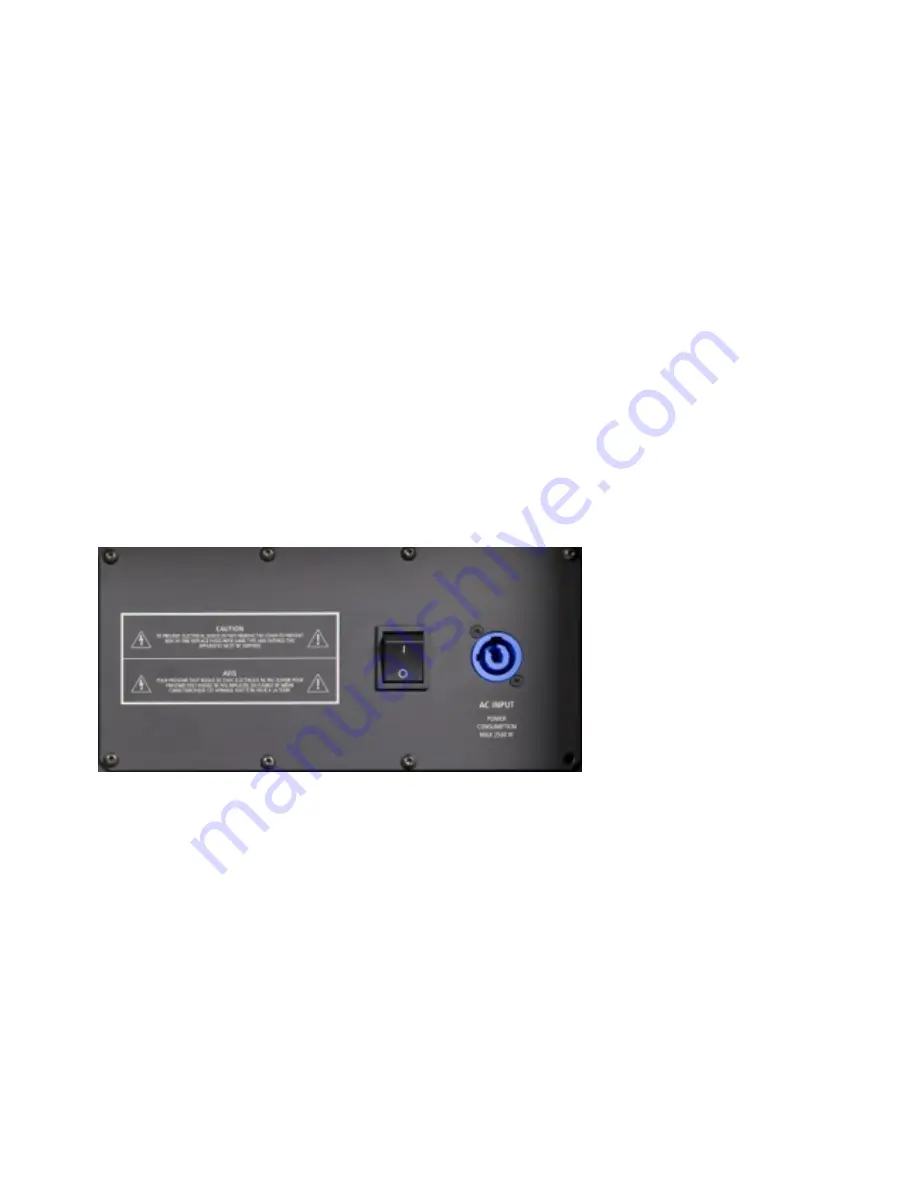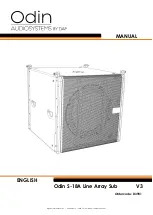
10
STATUS INDICATOR.
The status indicator blink orange if the main amplifier or power supply is in
faulty condition. If the status indicator lights orange, switch o
ff
the amplifier and call the closest
RCF SERVICE CENTRE.
11
SIGNAL INDICATOR.
The signal indicator lights green if there is signal present on the main XLR
input.
12 LIMITER INDICATOR.
The amplifier has a built in compressor/limiter circuit to prevent clipping of
the amplifiers or overdriving the transducers.
When the compressor is active the led is blinking yellow. When the soft clipping circuit is active
the LED blinks orange. It is okay if the limit LED blinks occasionally. If the LED blinks frequently or
lights continuously, turn down the signal level.
The amplifier has a built in RMS limiter. If the RMS
limiter is active the LED lights red. The RMS limiter has the purpose to prevent damages the
transducers. The speaker shall never be used with the limit indicator red, continuously. Continuous
operation with the RMS protection active can cause damages to the speaker.
13 CARDIOID SET-UP SWITCH.
This switch provides a special equalisation and delay setting to create
a cardioid pattern when the system is used in conjunction with two other TTS56-A modules.
14 BY PASS SWITCH.
Pressing this switch it is possible to by-pass the RDNet user setting preloaded
on the module.
15 DATA INPUT ETHERCON CONNECTOR.
RDNet
Input CAT5 Ethercon connector.
16 DATA LINK ETHERCON CONNECTOR.
RDNet
Link CAT5 Ethercon connector.
17 LINK LED.
This green led is on if the module is addressed from the RDNet controller
18
ACTIVE LED.
This green led is blinking if the RDNet communication is active.
19
POWER MAIN SWITCH
. The power switch turns the AC power ON and OFF. Make sure that the
sensitivity is set to + 10 dBu when you turn on the speaker.
20
AC POWERCON RECEPTACLE.
RCF TT+ series uses a POWERCON locking 3-pole AC mains. Always
use the specific power cord provided in the package.
CONNECTIONS
The XLR connectors use the following AES standard:
PIN 1
=
GROUND (SHIELD)
PIN 2
=
HOT (+)
PIN 3
=
COLD (-)
BEFORE TURNING ON THE SPEAKER
At this point you can connect the power supply cable and the signal cable, but before turning on the
speaker make sure that the volume control is at the minimum level (even on the mixer output). It is
important that the mixer is already ON before turning on the speaker. This will avoid damage to the
speakers and noisy “bumps” due to turning on parts on the audio chain. It is a good practice to always
turn on speakers at last and turn them o
ff
immediately after the show.
Now you can turn ON the speaker and adjust the volume control to a proper level.
TIME DELAY SETTING







































